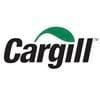I. INTRODUCTION
Body composition, more specifically breast muscle and the abdominal fat pad, at the end of the rearing period of breeder pullets seems to play an important role in egg production, lay persistency, and fertility in the laying phase. Management of feeding by changing feed allowance or nutrient composition of the breeder pullet’s diet during rearing can alter body composition at the onset of lay. Adequate dietary protein is necessary to have optimum ovary development, and a certain fat deposition is required which can be used as an energy source for egg production and persistency. However, the optimum body composition at the end of rearing that will support the best egg production performance and persistency is not defined (Van Emous et al., 2013). In broiler breeder nutrition, major attention has been given to the number of saleable chicks per hen; however, maternal nutrition can also affect the performance of offspring by changing the nutrients deposited in the egg or via transgenerational epigenetics (Lopes and Leeson, 1995a & b). The objective of the current study was to estimate the optimum dietary crude protein (CP) during the rearing phase in relation to egg production, fertility, and lay persistency as well as offspring growth performance. Offspring dietary CP levels were also assessed.
II. MATERIALS AND METHODS
Nine hundred and sixty ROSS 308 day-old breeder chicks were used in a dose-response trial with 6 × 4 pens (6 treatments, 4 replicates) of 40 birds each and received a standard diet at 0 - 2 weeks of age and 6 experimental diets starting from week 3 to the end of rearing (22 weeks). Experimental diets were formulated to have -20, -15, -10, -5, 0, and +5% of the recommended CP levels during rearing. Other nutrients including energy were provided to fulfil requirements. All birds were reared to the same target body weight at the end of rearing based on supplier guidelines. At the end of 22 weeks, 10 birds from each pen were randomly selected for dissection and carcass, fat pad, and breast weights were measured for each dietary treatment. From 22 weeks onwards, 27 hens and 3 roosters were placed in each pen and received the same standard lay diets to the end of the trial (64 weeks). Eggs were collected and weighed daily. Egg fertility and hatchability were measured 8 times during the lay phase at weeks 28, 32, 38, 43, 53, 57, and 60. Eggs from 28, 43, and 60 week old breeders were incubated and chicks were hatched for the 3 grow out trials. Chicks in each grow out trial received one of 3 experimental diets including standard and 2 reduced CP diets (-7.5 & - 15% in starter and -6 & -12% in grower and finisher phases). Feed intake and body weight in each trial were recorded weekly and feed efficiency was calculated for 0 - 34 days.
III. RESULTS AND DISCUSSION
The breeder birds on reduced dietary CP diets were allocated more feed in order to achieve the target body weight at the end of rearing. Protein intake levels, however, were still below recommendations for the -20, -15, -10 and -5% CP levels. Table 1 presents the results for body weight (BW), average daily gain (ADG), average daily feed intake (ADFI), and feed conversion ratio (FCR) during rearing, and carcass composition at the end of rearing. Birds achieved similar target BW at 22 weeks by feeding management. Reduced dietary CP reduced breast weight (p < 0.001) and increased abdominal fat pad linearly (p < 0.001).
Table 1 - Growth performance parameters (0-22 weeks) and carcass composition at the end of rearing (22 weeks) of female breeders.
Table 2 shows egg production, fertility and hatchability parameters during the laying phase (22 - 64 weeks). Larger breast weight was associated with higher feed intake with no differences in production performance, which suggests a higher maintenance requirement for heavier breasts. Reduced CP (-15 and -10%) treatment groups tended to have a higher %lay and total number of eggs, e.g. 4 more eggs in the -10% treatment compared with the standard group.
Table 2 - Egg production, fertility and hatchability parameters during laying phase (22-64 weeks) breeders.

The main effects of different breeder rearing dietary CP levels on offspring growth performance are presented in Table 3. The effects of parent rearing nutrition on offspring growth performance were not strong; however there were quadratic tendencies for final body weight (BW 34 d) and average daily gain (ADG 0-34 d). Mortality and feed efficiency were not affected. The reduced dietary CP of the breeder rearing diet did not result in more efficient offspring in terms of CP utilization, as their performance decreased in response to lowered dietary CP. Body weight 34d, ADG (0-34d), ADFI (0-34 d), and gain to feed (G:F 0- 34 d) were linearly reduced by reducing offspring dietary CP level as shown in Table 4. The interactions of different breeder rearing diet and offspring reduced CP diets on offspring performance (data not presented) were not significant for the overall trial and only ADG (p = 0.02) and ADFI (p = 0.009) of offspring was affected in the last week (28 – 34 d).
Table 3 - Main effects of breeder rearing diet on offspring final body weight (BW), average daily gain (ADG), average daily feed intake (ADFI), gain to feed (G:F).
Table 4 - Main effects of reduced crude protein diets on offspring growth performance.
IV. CONCLUSION
The overall conclusion of the current study is that dietary CP level could be reduced during rearing of broiler breeders resulting in the deposition of a slightly higher abdominal fat pad at the end of rearing, with the -10% CP diet resulting in higher egg production performance and persistency. The broiler chicken offspring of breeders reared on lower CP diets did not become more efficient in CP utilization as their growth performance declined as the dietary CP reduced, which indicates that decreasing breeders rearing dietary CP has less pronounced effects on the growth performance of their offspring.
Presented at the 29th Annual Australian Poultry Science Symposium 2018. For information on the latest and future editions, click here. 





















